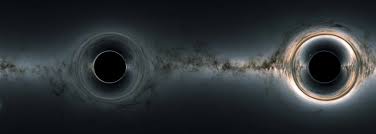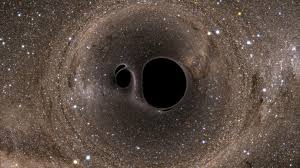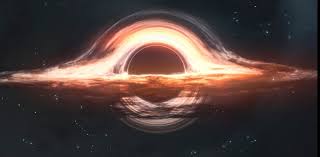Contents
- 1 Formation of Black Holes
- 1.1 Types of Black Holes
- 1.2 The Role of Black Holes in the Universe
- 1.3 Studying Black Holes
- 1.4 The Event Horizon Telescope and Imaging Black Holes
- 1.5 Time Dilation and Spacetime Distortion
- 1.6 Challenges in Black Hole Research
- 1.7 Black Holes and the Future of Space Exploration
- 1.8 Cultural and Philosophical Impacts
- 1.9 Conclusion
- 2 Author
Black holes are among the most mysterious and intriguing phenomena in the universe. They are regions of spacetime where gravity is so strong that nothing, not even light, can escape from them. This incredible gravitational pull results from a massive amount of matter being compressed into an extremely small area, creating a singularity. Black hole are surrounded by an invisible boundary called the event horizon, which marks the point of no return for anything venturing too close.
Formation of Black Holes

Black holes are formed under extreme conditions, often resulting from the death of a massive star. When a star exhausts its nuclear fuel, it collapses under its own gravity. If the collapsing star has enough mass, it can compress into a singularity, forming a black hole. This process typically happens during a supernova explosion, a spectacular event that marks the end of a star’s life.
There are also other types of black holes that form through different mechanisms. For instance, supermassive black hole, found at the centers of most galaxies, are thought to grow over billions of years by accreting matter and merging with other black hole. Intermediate-mass black holes may form through the collision and combination of smaller black hole, although their origins remain less understood.
Types of Black Holes
Black holes are categorized into different types based on their size and mass:
- Stellar Black Holes: These are the most common type and are formed when massive stars collapse. They typically have a mass between 5 and 30 times that of the Sun.
- Supermassive Black Holes: Found at the center of most galaxies, these black hole can have masses ranging from millions to billions of times that of the Sun. The supermassive black hole in our galaxy, the Milky Way, is known as Sagittarius A*.
- Intermediate-Mass Black Holes: These are less common and fall between stellar and supermassive black hole in size, with masses ranging from hundreds to thousands of times that of the Sun.
- Primordial Black Holes: Hypothetical black holes that are thought to have formed in the early universe. Their existence has not been confirmed, but they remain a topic of interest in theoretical physics.
The Role of Black Holes in the Universe
Black holes play a crucial role in the dynamics and evolution of galaxies. Supermassive black hole, in particular, are believed to regulate star formation in galaxies through the release of energy during accretion. This process, known as feedback, prevents excessive growth of stars and maintains the balance of matter in galaxies.
Additionally, black holes are thought to be essential in the creation of quasars, which are some of the brightest objects in the universe. Quasars form when a supermassive black hole actively accretes matter, creating a luminous disk of gas and dust that emits immense energy.
Studying Black Holes
Observing black holes directly is impossible due to their nature, as they do not emit light. However, scientists study their effects on nearby matter to infer their presence. One method involves observing the motion of stars and gas clouds near a suspected black hole. The gravitational influence of the black hole causes these objects to move in distinct ways, revealing its location and mass.
Another groundbreaking method of studying black hole is through the detection of gravitational waves. These ripples in spacetime occur when massive objects, such as black holes, merge. In 2015, the Laser Interferometer Gravitational-Wave Observatory (LIGO) made the first-ever detection of gravitational waves, confirming a merger of two black hole.
The Event Horizon Telescope and Imaging Black Holes

In 2019, the Event Horizon Telescope (EHT) collaboration achieved a historic breakthrough by capturing the first-ever image of a black hole. This image showed the shadow of a supermassive black hole at the center of the galaxy M87. The achievement was made possible by combining data from telescopes across the globe to create a virtual Earth-sized telescope.
This historic image confirmed several theoretical predictions about black holes and provided direct evidence of their existence. The success of the EHT project has paved the way for further observations and a deeper understanding of black hole.
Time Dilation and Spacetime Distortion
One of the most fascinating aspects of black holes is their ability to warp spacetime. Einstein’s theory of general relativity predicts that black holes create extreme distortions in spacetime. Time dilation occurs near a black hole, where time slows down significantly due to the intense gravitational field. For an observer far away, objects falling into a black hole appear to freeze near the event horizon.
These phenomena have been explored extensively in science fiction and have inspired countless discussions about the nature of time and space.
Challenges in Black Hole Research
Despite significant advancements, black hole research still faces many challenges. Understanding the singularity at the core of a black hole, where current laws of physics break down, remains wdbos one of the biggest puzzles. Theories such as quantum gravity aim to reconcile the incompatibilities between general relativity and quantum mechanics to explain these extreme environments.
Additionally, questions about the information paradox—whether information that falls into a black hole is lost forever—continue to intrigue physicists. The resolution of this paradox could provide fundamental insights into the nature of reality and the universe.
Black Holes and the Future of Space Exploration

Black holes are not just objects of scientific curiosity; they may hold the key to understanding some of the universe’s deepest mysteries. As technology advances, future missions and telescopes will provide more detailed observations of black hole and their surrounding environments.
The study of black holes could also lead to breakthroughs in understanding dark matter and dark energy, two of the most elusive components of the universe. By studying the interactions between black hole and these phenomena, scientists hope to unravel the complexities of cosmic evolution.
Cultural and Philosophical Impacts
Black holes have captivated the imagination of humanity for decades, inspiring countless works of literature, art, and film. Their enigmatic nature challenges our understanding of existence and raises profound philosophical questions about the nature of reality, time, and the universe.
From theoretical physicists to science fiction enthusiasts, black hole continue to be a source of wonder and inspiration. They remind us of the vastness of the cosmos and the limits of human knowledge, encouraging us to explore and question the unknown.
Conclusion
Black holes are among the most fascinating and mysterious objects in the universe. They represent the extremes of nature, pushing the boundaries of our understanding of physics and the cosmos. Through continued observation and research, humanity will uncover more about these enigmatic entities, deepening our appreciation of the universe’s complexity.
